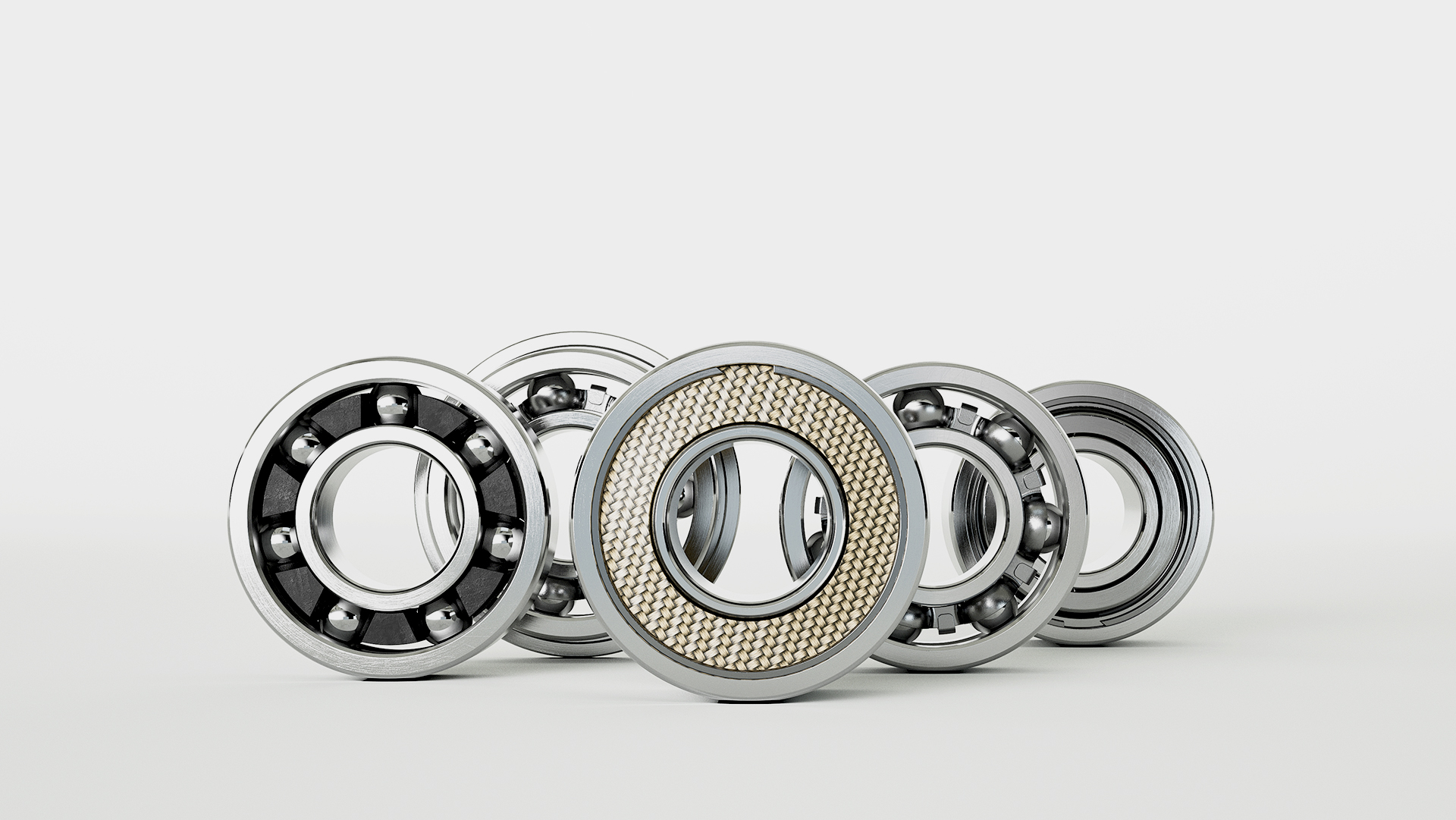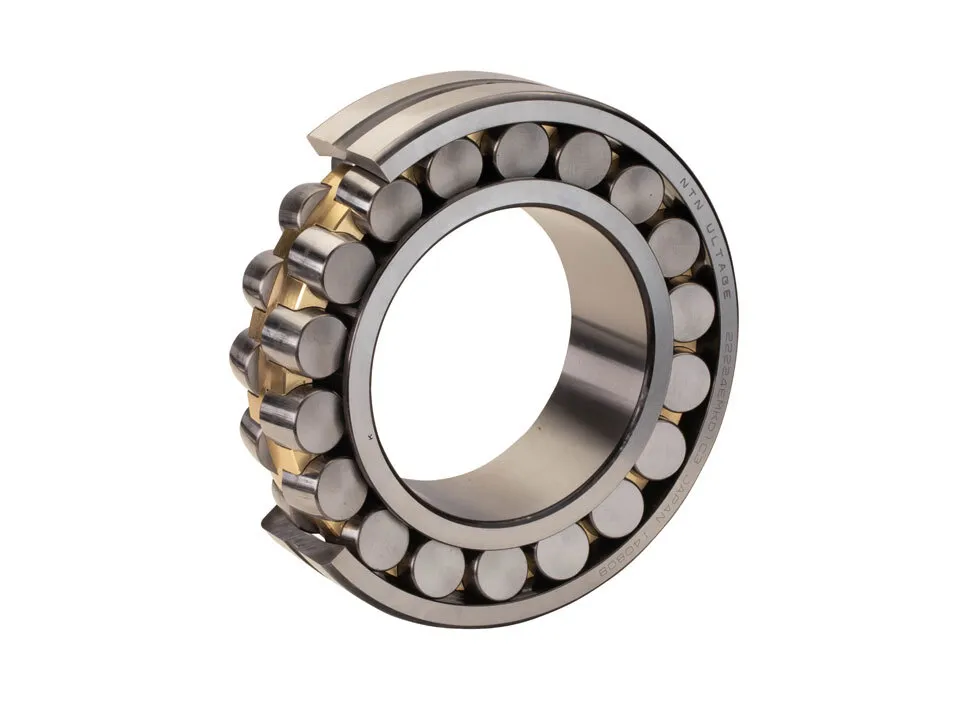
How do radial bearings contribute to reduced friction and smooth rotation in machinery?
Radial bearings play a crucial role in reducing friction and promoting smooth rotation in machinery. Their design and construction contribute to minimizing contact between moving parts, optimizing efficiency, and enhancing overall performance. Here is a detailed explanation of how radial bearings achieve reduced friction and smooth rotation:
1. Rolling Elements:
Radial bearings typically incorporate rolling elements, such as balls or rollers, between the inner and outer races. These rolling elements reduce friction compared to sliding contact between surfaces. As the bearing rotates, the rolling elements roll instead of slide, resulting in lower frictional forces and reduced energy loss. The rolling action of the elements contributes to smoother rotation and improved efficiency.
2. Lubrication:
Lubrication is essential for reducing friction and ensuring smooth rotation in radial bearings. Lubricants, such as oils or greases, are used to create a thin film between the rolling elements and raceways. This lubricating film separates the surfaces, minimizing direct contact and friction. The lubricant also helps to dissipate heat generated during operation, preventing excessive temperature rise and potential damage to the bearing. Proper lubrication is critical to maintaining low friction and promoting smooth rotation in radial bearings.
3. Bearing Clearance and Preload:
The clearance or preload adjustment in radial bearings also contributes to reduced friction and smooth rotation. Bearing clearance refers to the intentional space left between the rolling elements and raceways, allowing for thermal expansion and accommodating operating conditions. Adequate clearance ensures that the bearing components can move freely without excessive interference, minimizing friction. On the other hand, preload is a controlled axial force applied to eliminate clearance and maintain a slight internal load on the bearing. Preload helps to reduce internal clearances, improve stiffness, and minimize any potential play or vibration, resulting in smoother rotation.
4. Bearing Material and Surface Finish:
The choice of bearing material and surface finish significantly impacts friction and smooth rotation. Radial bearings are commonly made from materials such as steel, ceramic, or polymer composites. These materials offer excellent hardness, wear resistance, and low friction characteristics. Additionally, the surfaces of the bearing components undergo precise machining and finishing processes to achieve smoothness and minimize surface irregularities. The combination of suitable materials and high-quality surface finishes promotes reduced friction and smooth rotation in radial bearings.
5. Bearing Design and Internal Geometry:
The design and internal geometry of radial bearings are optimized to minimize friction and promote smooth rotation. Factors such as the number and size of rolling elements, the contact angle, and the curvature of the raceways are carefully engineered to ensure proper load distribution and minimize stress concentrations. Well-designed bearing cages also help maintain the correct spacing and alignment of the rolling elements, reducing friction and ensuring smooth rotation. The overall design and geometry of radial bearings are crucial for achieving optimal performance and minimizing frictional losses.
6. Precision Manufacturing:
Radial bearings are manufactured with high precision to achieve tight tolerances and minimize variations in dimensions. Precision manufacturing processes, such as grinding and superfinishing, ensure that the bearing components have accurate shapes and smooth surfaces. This precision manufacturing contributes to reduced friction and smooth rotation by minimizing irregularities and imperfections that can cause excess friction or vibration.
In summary, radial bearings contribute to reduced friction and smooth rotation in machinery through the use of rolling elements, proper lubrication, optimized bearing clearance or preload, suitable materials and surface finishes, well-engineered designs, and precision manufacturing. These factors work together to minimize contact, reduce frictional forces, and ensure efficient and reliable operation of machinery and equipment.

How do radial bearings perform in high-speed or high-load applications?
Radial bearings are designed to perform reliably in high-speed or high-load applications, where they are subjected to demanding operating conditions. These bearings are engineered to withstand the forces and speeds associated with such applications. Here’s a detailed explanation of how radial bearings perform in high-speed or high-load applications:
1. High-Speed Applications:
In high-speed applications, radial bearings are designed to minimize friction and reduce heat generation. They employ various features to achieve this, such as optimized ball or roller designs, precise manufacturing tolerances, and advanced cage materials. These design elements help reduce centrifugal forces, improve rolling element guidance, and maintain stable operation at high rotational speeds. Additionally, high-quality lubricants are used to ensure proper lubrication and temperature control, enabling the bearing to operate efficiently and reliably even at high speeds.
2. High-Load Applications:
Radial bearings are engineered to handle high loads encountered in various applications. They are designed with robust construction, using high-quality materials and advanced bearing geometries. These features enable radial bearings to distribute the applied loads evenly across their contact surfaces, minimizing stress concentrations and preventing premature failure. Additionally, radial bearings may incorporate specialized cage designs or additional rollers or balls to enhance their load-carrying capacity. The selection of the appropriate bearing type and size, along with proper lubrication, is crucial to ensure optimal performance and longevity in high-load applications.
3. Heat Dissipation:
In both high-speed and high-load applications, radial bearings must effectively dissipate heat generated during operation. Excessive heat can lead to premature bearing failure or degradation of lubricants. Radial bearings are designed with features that promote efficient heat dissipation, such as internal clearances, optimized bearing materials, and effective lubrication systems. These features help maintain the operating temperature within acceptable limits, ensuring the integrity and performance of the bearing in demanding conditions.
4. Cage Design:
The cage design of radial bearings is an essential factor in their performance in high-speed or high-load applications. The cage holds the rolling elements in position, preventing contact and ensuring proper spacing. In high-speed applications, cages with low friction and good guidance properties are used to minimize heat generation and maintain stable operation. In high-load applications, stronger and stiffer cage materials are employed to withstand the forces exerted by the applied loads. The cage design is optimized to balance the trade-off between strength, guidance, and friction characteristics, ensuring the reliable performance of the radial bearing under demanding conditions.
5. Lubrication and Contamination Control:
In high-speed or high-load applications, proper lubrication is crucial for the performance and longevity of radial bearings. Lubricants with high viscosity and excellent thermal stability are used to ensure adequate lubrication under extreme conditions. Effective lubrication minimizes friction, reduces wear, and controls temperature rise. Additionally, contamination control is essential to prevent abrasive particles or contaminants from entering the bearing and causing damage. Sealing solutions and proper maintenance practices are employed to safeguard the bearing against contamination in high-speed or high-load applications.
6. Application-Specific Considerations:
When using radial bearings in high-speed or high-load applications, it is important to consider the specific requirements and conditions of the application. Factors such as operating temperature, rotational speed, applied loads, vibration levels, and environmental conditions should be taken into account during the bearing selection process. Working closely with bearing manufacturers or industry experts can help ensure that the chosen radial bearings are suitable for the specific high-speed or high-load application, optimizing performance and maximizing bearing life.
In summary, radial bearings are designed to perform reliably in high-speed or high-load applications. Through their specialized design, robust construction, efficient heat dissipation, optimized cage designs, proper lubrication, and consideration of application-specific factors, radial bearings can meet the challenges of demanding operating conditions, providing reliable and long-lasting performance.

Are there specific considerations for choosing radial bearings in applications with varying radial loads or operating conditions?
Choosing radial bearings for applications with varying radial loads or operating conditions requires careful consideration of several factors. The selection process should take into account the specific requirements and challenges posed by the varying loads and operating conditions. Here’s a detailed explanation of the specific considerations for choosing radial bearings in such applications:
1. Load Capacity:
One of the primary considerations is the load capacity of the radial bearing. It is essential to evaluate the expected range of radial loads and ensure that the selected bearing can handle the maximum load without exceeding its capacity. The load capacity of a bearing is typically specified by the manufacturer and is influenced by factors such as bearing size, design, and materials. It is important to choose a bearing with a sufficient load capacity to accommodate the varying radial loads encountered in the application.
2. Dynamic and Static Load Ratings:
The dynamic and static load ratings provided by the bearing manufacturer are crucial for assessing the bearing’s ability to handle varying loads. The dynamic load rating indicates the maximum load a bearing can sustain for a specified number of rotations without experiencing excessive wear or fatigue. The static load rating represents the maximum load the bearing can withstand without permanent deformation. Comparing the expected loads in the application with the dynamic and static load ratings helps ensure that the selected bearing is suitable for the varying radial loads.
3. Bearing Clearance:
Bearing clearance refers to the internal gap between the rolling elements and the raceways. In applications with varying loads, it is important to consider the appropriate bearing clearance. A tighter clearance may be suitable for higher loads as it minimizes internal movement and reduces the risk of excessive wear. On the other hand, a looser clearance may be preferred for lighter loads to ensure smooth operation and minimize friction. It is crucial to consult the bearing manufacturer’s guidelines and recommendations to determine the optimal clearance for the specific application.
4. Lubrication:
Varying radial loads can affect the lubrication requirements of the bearing. Higher loads may result in increased friction and heat generation, necessitating appropriate lubrication to ensure proper operation and prevent premature failure. It is important to select the right type of lubricant and consider factors such as viscosity, temperature range, and compatibility with the bearing materials. In applications with varying loads, periodic monitoring of lubrication conditions and maintenance intervals is essential to ensure optimal lubrication and prevent issues associated with inadequate lubrication.
5. Bearing Design and Materials:
The design and materials of the radial bearing play a significant role in its ability to withstand varying loads and operating conditions. Different bearing designs, such as deep groove ball bearings, cylindrical roller bearings, or tapered roller bearings, have varying load capacities and performance characteristics. The choice of bearing material, such as steel, ceramic, or polymer, can also impact factors such as strength, fatigue resistance, and corrosion resistance. It is important to select a bearing design and material that are suitable for the anticipated loads and operating conditions in the application.
6. Temperature and Environmental Factors:
Varying radial loads can affect the temperature and environmental conditions within the bearing. Higher loads can result in increased heat generation, which may require additional considerations for heat dissipation and thermal management. Similarly, if the application involves exposure to moisture, chemicals, or abrasive particles, it is important to select a bearing with appropriate seals or shields to protect against contamination. Considering the temperature and environmental factors helps ensure the longevity and reliability of the bearing in applications with varying loads.
7. Application-Specific Considerations:
Each application may have unique requirements or constraints that need to be taken into account when selecting radial bearings. Factors such as speed, vibration levels, mounting arrangements, space limitations, and maintenance accessibility should be considered. Consulting with bearing manufacturers or industry experts can provide valuable insights and guidance for choosing the most suitable radial bearings for applications with varying loads and operating conditions.
By carefully evaluating these specific considerations, it is possible to select radial bearings that can reliably and efficiently handle the varying radial loads encountered in the application, ensuring optimal performance and durability.


editor by CX 2024-04-02